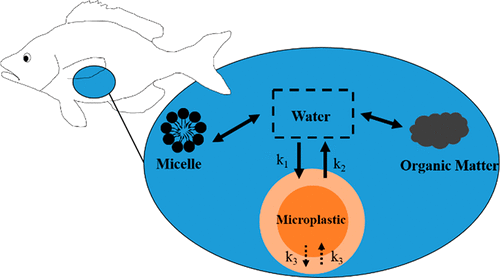

- Sir David Frederick Attenborough -
“If we take care of nature, nature will take care of us”
PUBLICATIONS


Priorities to inform research on marine plastic pollution in Southeast Asia
Omeyer, L. C. M., Duncan, E. M., ..., Mohamed Nor, N. H., ..., Godley, B. J.
Science of the Total Environment
A synthesis of current knowledge on the state of marine plastic pollution in the Southeast Asia region and highlights on areas for further research. The survey was carried out by an interdisciplinary network of experts focusing on five non-predefined key themes: (1) Characterize marine plastic pollution; (2) Explore movement and fate in the region; (3) Biological and chemical modifications that marine plastic undergo; (4) Environmental, social and economic impacts; (5) Target regional policies and possible solutions.

Risk assessment of microplastic particles
Koelmans, A. A., Redondo-Hasselerharm, P. E., Mohamed Nor, N. H., de Ruijter, V. N., Mintenig, S. M., Kooi, M.
Nature Reviews Materials
A review looking at the current tenets in defining microplastic characteristics and effects, emphasizing advances in the analysis of the diversity of microplastic particles. A summary of unique characteristics of microplastics compared to other environmental particles is discussed. Finally, the paper proposes how exposure and effect thresholds can be aligned and quantified using probability density functions describing microplastic particle diversity to characterize risks.

Lifetime accumulation of microplastic in children and adults
Mohamed Nor, N. H., Kooi, M., Diepens, N. J. & Koelmans, A. A.
Environmental Science & Technology
Probabilistic lifetime exposure model for children and adults, which accounts for intake via eight food types and inhalation, intestinal absorption, biliary excretion, and plastic-associated chemical exposure via a physiologically based pharmacokinetic submodel. The model probabilistically simulates microplastic concentrations in the gut, body tissue and stool, the latter allowing validation against empirical data.

Solving the nonalignment of methods and approaches used in microplastic research to consistently characterize risk
Koelmans, A. A., Redondo-Hasselerharm, P. E., Mohamed Nor, N. H. & Kooi, M.
Environmental Science & Technology
The lack of standard approaches in microplastic research limits progress in the abatement of plastic pollution. We propose and test rescaling methods to improve the alignment of methods used in microplastic research. The method allows us to interchange between number, volume and mass concentrations using probability density functions that represent environmental microplastic.

Microplastics in freshwaters and drinking water: Critical review and assessment of data quality
Koelmans, A. A., Mohamed Nor, N. H., Hermsen, E., Kooi, M., Mintenig, S. M. & De France, J.
Water Research
Fifty studies on microplastics in drinking water and freshwater were reviewed including lake water, groundwater, tap water and bottled drinking water. Quality of studies were quantitatively assessed with a set of proposed criteria. Four out of fifty studies scored positive on all quality criteria.

Environmental factors influence cylindrospermopsin production of Cylindrospermopsis raciborskii (CR12)
Mohamed Nor, N. H., Te, S. H., Mowe, M. A. D. & Gin, K. Y. H.
Journal of Plankton Research
The growth and cyanotoxin production response to phosphorus, temperature and light of a Singaporean strain, CR12, were examined. Optimal growth temperature was at 33°C, higher than other Cylindrospermopsis raciborskii strains and maximum growth rate was observed at the highest light intensity tested. A significant non-linear relationship was observed between net cellular CYN production rate and growth rate.

Transfer of PCBs from microplastics under simulated gut fluid conditions is biphasic and reversible
Mohamed Nor, N. H. & Koelmans, A. A.
Environmental Science and Technology
A chemical exchange model on microplastics in a gut fluid mimic of aquatic biota was developed and parameterized based on the transfer kinetics of 14 polychlorinated biphenyls (PCBs) for low density polyethylene (LDPE) and polyvinyl chloride (PVC). Chemical transfer was demonstrated to be biphasic and fully reversible.

Microplastics in Singapore's coastal mangrove ecosystems
Mohamed Nor, N. H. & Obbard, J. P.
Marine Pollution Bulletin
The prevalence of microplastics was identified in seven intertidal mangroves habitats of Singapore. Highest microplastic concentration was found in northwest of Singapore (Lim Chu Kang) and majority of the particles were fibrous and smaller than 20 μm in size. Four major polymer types were identified, including polyethylene, polypropylene, nylon and polyvinyl chloride.
